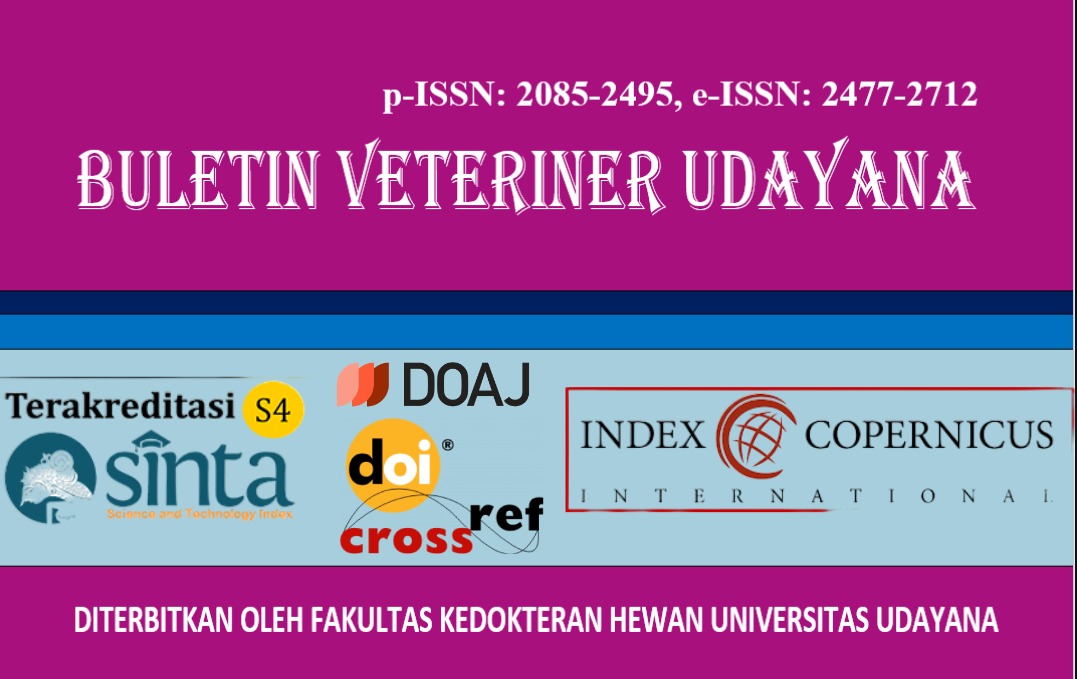THE EFFECT OF ECOENZYM ADMINISTRATION ON THE GROWTH OF MICROCOCCUS LUTEUS ISOLATED FROM DOG'S SKIN
DOI:
https://doi.org/10.24843/bulvet.2025.v17.i03.p55Keywords:
ekoenzim, micrococcus luteus, ramah lingkungan, daya hambat, in vivoAbstract
Ecoenzymes, known for their robust antiseptic capabilities, are efficacious in eliminating a wide array of microorganisms, encompassing bacteria, fungi, and viruses. The susceptibility of canines to dermatological afflictions, particularly dermatitis, is often exacerbated by bacterial infections, with Micrococcus luteus frequently implicated. This study harnesses ecoenzymes derived from diverse botanical sources: Carica papaya L. (papaya) peel, Annona muricata L. (soursop) peel, Azadirachta indica A. Juss (neem) leaves, and Cymbopogon winterianus jowitt (lemongrass). The primary objective of this research is to rigorously assess the inhibitory effects of these ecoenzymes on the proliferation of Micrococcus luteus isolated from canine ectodermal skin tissues. Employing a quantitative approach, the study utilizes a modified Kirby-Bauer agar diffusion assay, incorporating an agar well diffusion technique. Structured as an experimental investigation, it adopts a completely randomized design with six treatment groups, including ecoenzyme concentrations of 50%, 60%, 75%, and 100%, in addition to positive and negative controls. The analysis of the resultant data is executed via Analysis of Variance (ANOVA), followed by a Games-Howell post-hoc test. The results demonstrated that the ecoenzymes effectively inhibited the growth of Micrococcus luteus, with inhibition zone diameters of 2.12 mm at 50% concentration, 3.42 mm at 60%, 7.17 mm at 75%, and 8.35 mm at 100%. Further studies are recommended to evaluate the levels and components of acetic acid, enzymes, and other bioactive compounds contained within the ecoenzymes.




